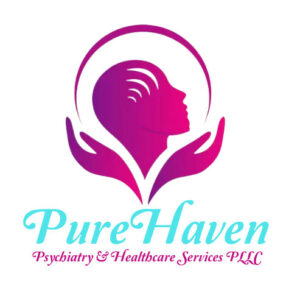ADHD vs Autism in Women: Understanding the Key Differences and Signs Early
ADHD vs autism in women is a complex and often misunderstood topic. Many women struggle for years without a diagnosis because symptoms of both conditions can be subtle or masked. Recognizing the differences between ADHD and autism in females is essential for timely and accurate diagnosis, which leads to better treatment and support. This blog will help you identify the early signs of both conditions, understand how they overlap, and know when to seek professional evaluation.
Table of Contents
- What Is ADHD and Autism in Women?
- Early Signs of ADHD in Women
- Early Signs of Autism in Women
- ADHD vs Autism in Women: Key Differences
- The Role of Masking and Misdiagnosis
- When to Seek Help (or Professional Assessment)
- How Early Diagnosis Improves Outcomes
- Call to Action
- Final Thoughts
1. What Is ADHD and Autism in Women?
ADHD (Attention Deficit Hyperactivity Disorder) and autism spectrum disorder are both neurodevelopmental conditions that affect how a person thinks, interacts, and processes information. In women, these conditions often present differently than in men, with symptoms that can be less obvious and frequently overlap. Understanding ADHD vs autism in women means recognizing that while ADHD mainly involves challenges with attention and hyperactivity, autism focuses more on social communication differences and sensory sensitivities.
2. Early Signs of ADHD in Women
The early signs of ADHD in women can be subtle and internalized. Common symptoms include:
-
Difficulty sustaining attention or frequent daydreaming
-
Chronic forgetfulness and disorganization
-
Internal restlessness or anxiety rather than visible hyperactivity
-
Emotional sensitivity and mood swings
-
Struggles with time management and procrastination
Because these signs often don’t fit the typical hyperactive ADHD stereotype, many women go undiagnosed for years.
3. Early Signs of Autism in Women
Autism in women also shows early signs that can be overlooked or mistaken for shyness or anxiety. These include:
-
Challenges with social interactions and forming relationships
-
Strong need for routine and discomfort with change
-
Intense focus on specific interests or hobbies
-
Sensory sensitivities such as discomfort with loud noises or textures
-
Difficulty expressing emotions or understanding social cues
Women may develop coping strategies that mask these symptoms, making early detection difficult.
4. ADHD vs Autism in Women: Key Differences
Understanding the difference between ADHD vs autism in women helps ensure proper support. ADHD primarily affects attention, impulse control, and executive function, whereas autism involves social communication and sensory processing challenges. However, many women experience traits of both, complicating diagnosis. Key differences include:
-
ADHD: More about inattentiveness and hyperactivity symptoms
-
Autism: More about social communication difficulties and repetitive behaviors
Accurate diagnosis requires careful evaluation by a professional familiar with female presentations of these conditions.
5. The Role of Masking and Misdiagnosis
Masking is when women consciously or unconsciously hide their symptoms to fit in socially. This behavior is common in both ADHD and autism and is a major reason for delayed diagnosis in females. Masking can lead to exhaustion, anxiety, and feelings of isolation. Misdiagnosis with anxiety, depression, or personality disorders often occurs instead of recognizing ADHD vs autism in women.
6. When to Seek Help (or Professional Assessment)
If you or a loved one notices persistent difficulties with attention, social communication, sensory sensitivities, or emotional regulation, it’s important to seek a professional evaluation. Early assessment helps:
-
Identify whether symptoms are related to ADHD, autism, or both
-
Develop an effective treatment and support plan
-
Prevent complications such as anxiety, depression, or academic/work difficulties
Early intervention improves long-term outcomes and quality of life.
7. How Early Diagnosis Improves Outcomes
Early diagnosis of ADHD vs autism in women offers many benefits, including:
-
Access to appropriate therapies such as behavioral interventions, social skills training, or medication
-
Better self-understanding and coping strategies
-
Improved mental health and reduced risk of secondary conditions
-
Stronger support systems at school, work, and home
Recognizing and addressing these neurodivergent traits early is empowering and life-changing.
8. Call to Action
If you suspect you or someone you care about may have signs of ADHD, autism, or both, don’t wait. At Pure Haven Psychiatry, we specialize in neurodevelopmental assessments tailored to women’s unique presentations. Our compassionate team is here to guide you through diagnosis and personalized care options. Contact us today to schedule an evaluation and take the first step toward better understanding and support.
9. Final Thoughts
The differences between ADHD vs autism in women can be subtle but understanding them is crucial. Many women live with undiagnosed neurodivergence for years, struggling without the right support. Early recognition, diagnosis, and tailored interventions lead to better mental health and a more fulfilling life. If you notice these signs in yourself or a loved one, seek help early — your unique brain deserves understanding and care.
Disclaimer
This blog is for informational purposes only and is not a substitute for professional medical advice or diagnosis. If you or someone you know is experiencing severe symptoms or distress, please seek immediate help from a qualified healthcare professional.

